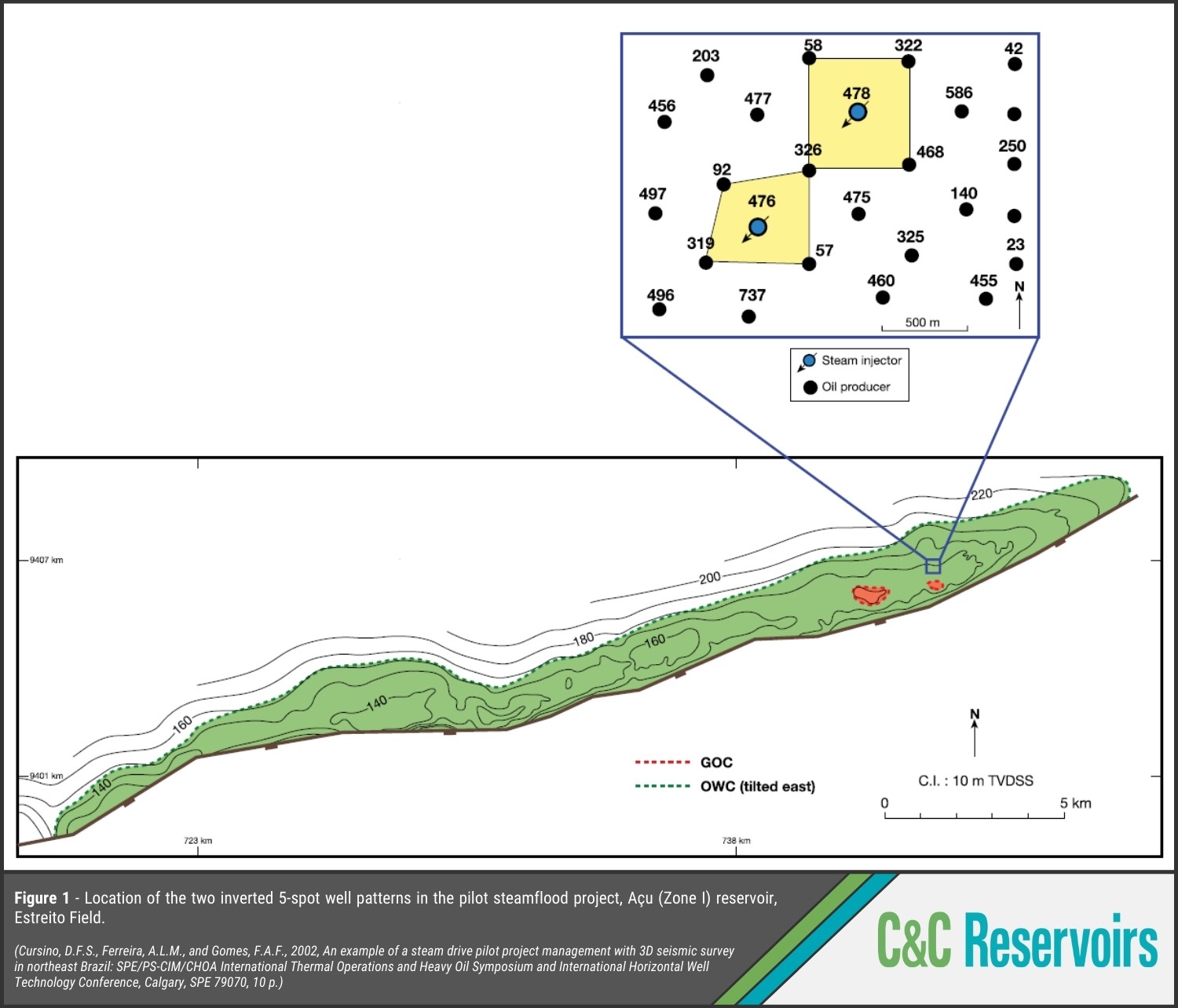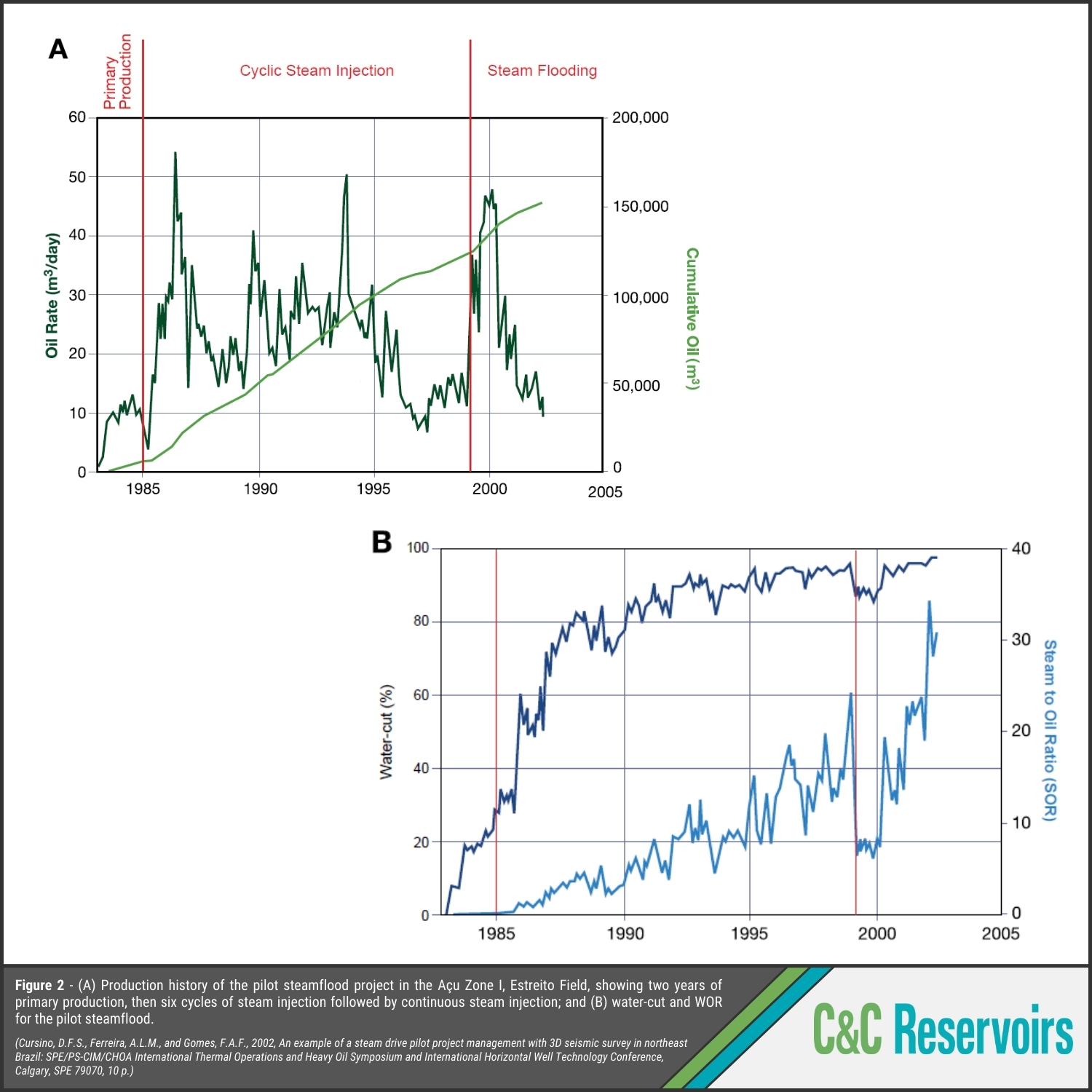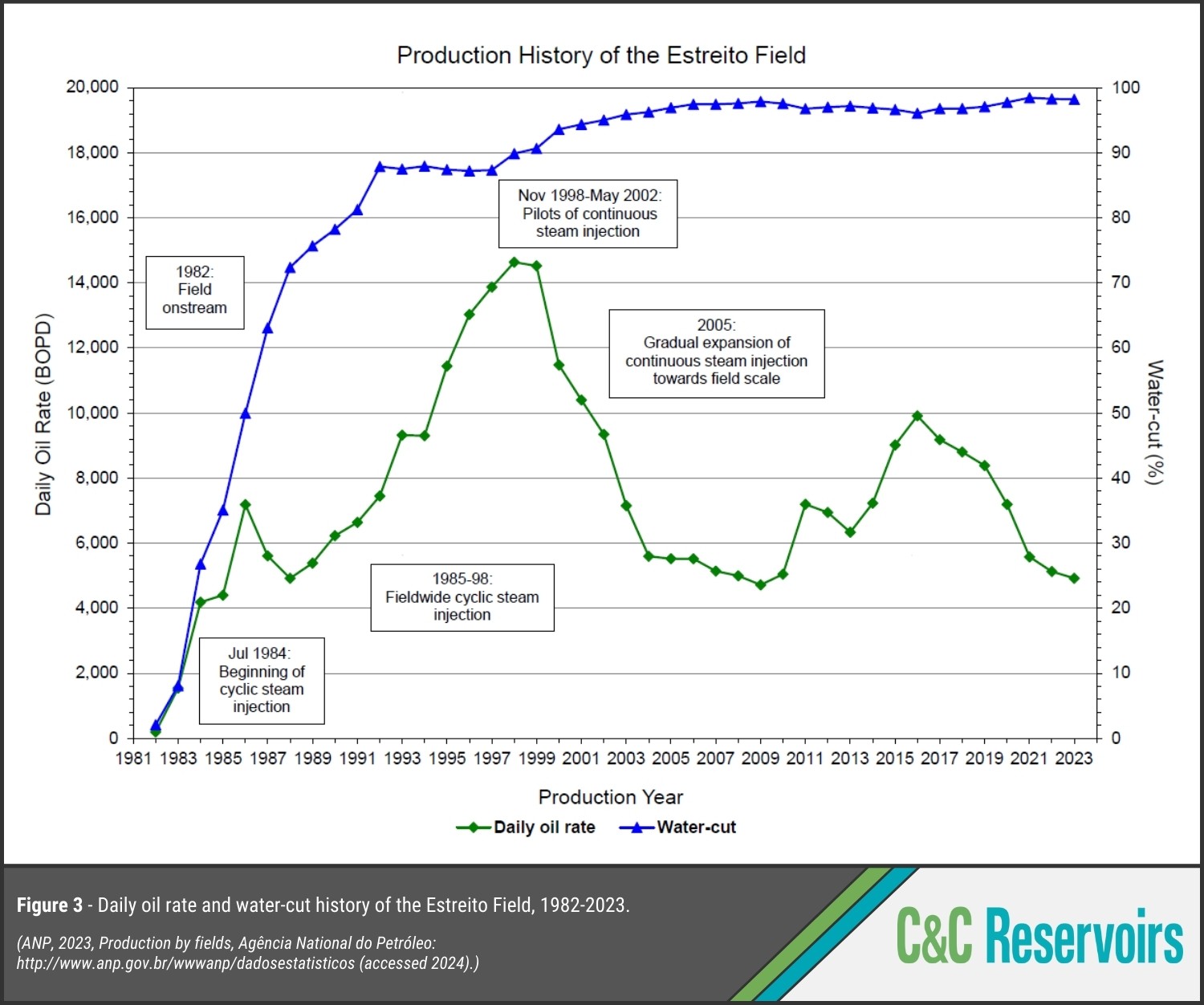The Estreito Field
Analogue Spotlight
Located in the Potiguar Basin, onshore Brazil, the Estreito Field has faced significant production challenges despite its favourable reservoir properties, shallow depth, and strong aquifer support. Containing a STOIIP of 839 MMBO, the field was only expected to produce an EUR of 125 MMBO, representing a 14.9% recovery factor. The shallowness of the reservoir (cresting at 180 m TVDML) results in an exceptionally low initial reservoir pressure of 284 psi. To compound these problems, the oil is too heavy (16 °API) and viscous (averaging 1500 cP) for the low pressure to drive the oil to the surface.
To address these challenges, cyclic steam injection commenced in 1984 and by 1998 it had been implemented in more than 1000 wells. The process was predicted to yield an incremental recovery of 7% of field STOIIP and ended up boosting production to a peak of 14,634 BOPD in 1998. However, by this time, near-wellbore reserves had begun to be exhausted.
Consequently, in the late 1990s, continuous steam injection was piloted in two areas, employing a 5-spot pattern with 140 m injector-producer separation (Fig. 1). Initially, the pilot project immediately boosted production, cumulatively recovering 0.2 MMBO (6.3% of STOIIP) in the pilot area (Fig. 2). It was not until 2005 that this pilot was expanded fieldwide, rejuvenating production and resulting in an astounding increase in production of 79.67% between 2005 and 2016 (Fig. 3). This allowed the field to become commercially viable, demonstrating the effectiveness of continuous steam injection in stimulating a low pressure, heavy oil field.



